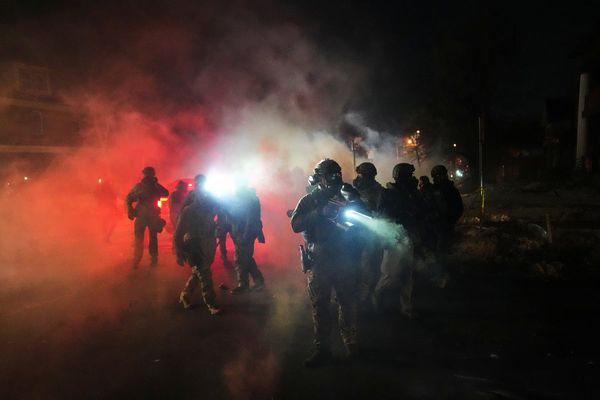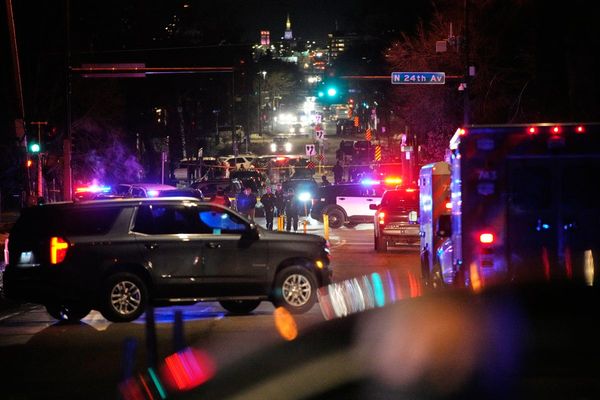
In the dock in both of his trials – both for murder, both of women he had professed to love – Ian Stewart cut an unimpressive figure. Shabby, hesitant, inexplicably dull – he seemed unremarkable in every way.
On Wednesday the 61-year-old was unmasked as a serial killer, found guilty of the murder of his wife Diane five years after being convicted of the 2016 murder of his fiancee Helen Bailey.
In 2017 a jury found Stewart guilty of killing Bailey, a children’s author, after hearing that while she was planning their wedding he drugged and suffocated her. After the murder he dumped her body, and that of her beloved dachshund, in a Victorian cesspit in the grounds of their home in Royston, Hertfordshire, so he could inherit her £4m fortune.
It was only after his arrest that alarm bells were raised about the fate of Diane, who died at home in Bassingbourn, Cambridgeshire, in 2010. At the time, her death was recorded as sudden unexplained death in epilepsy (SUDEP), after Stewart said he found his wife collapsed in the garden. But over three weeks a jury at Huntingdon crown court was unconvinced of his insistence that the pair “were in love, very happy” and that he had desperately tried to save her life.
The court heard that he made several delays before ringing 999 on 25 June 2010. He did mouth to mouth, which he said “exhausted” him, then he went to “try to get help” from a doctor and a nurse who lived opposite. He said he tried CPR again before finally ringing the emergency services.
The jury heard a recording of the call, in which Stewart could be heard counting along with the emergency call handler, apparently using the resuscitation techniques described to him.
But the paramedic who attended the scene said Stewart was “initially distracted, idly pacing” when help arrived. He wasn’t crying, screaming or upset but “appeared dissociative and was simply answering questions calmly.” There were no signs of the bodily trauma that normally accompanied the administering of effective CPR, he added. Twenty minutes after the ambulance arrived, Diane was pronounced dead.
Alexandra Bailey, who studied with Diane at Salford University in the 1980s, said in a statement that Stewart “seemed totally unbothered and seemed quite aloof” at her friend’s funeral.
Stewart’s 90-year-old father, Keith, put the lack of emotion shown by Stewart down to a long-term muscle condition. “I don’t think he’s capable of doing something like that,” he said of the murder charge.
Diane’s sister, Wendy Bellamy-Lee, said she had harboured an “element of suspicion”, heightened after Stewart got angry when she called the coroner’s office days after Diane’s death. “He was so cross with me. Then I felt really bad that I had done that and I had to tell him,” she said.
After Diane’s death, Stewart received £96,000 in inheritance, which he said was for their sons’ future. He bought a red two-seater MG and said the purchase was in her memory.
But he did not do the probate paperwork for another £50,000 he could have claimed. The prosecution barrister Stuart Trimmer – who also prosecuted Stewart’s first trial – suggested this was because he had already met Bailey. Stewart’s son Jamie, who was 18 when Diane died, told the court that at the end of that year Stewart met someone in an online bereavement group.
As he settled into his new life it must have seemed to Stewart that he would never face consequences for what he had done. Diane’s body had been cremated, and a full toxicology had not been done as part of the 2010 postmortem examination.
But one vital clue to the murder remained – Diane had donated brain tissue for medical research. Upon re-examination, a neuropathologist said it showed signs that “breathing had been restricted” for between 35 minutes and an hour before her death. A consultant neurologist estimated the risk of the 47-year-old having had a fatal epileptic seizure at about one in 100,000. Another expert said he would have expected to see injuries on the outside of the body of someone who had fallen on concrete during a seizure.
Stewart denied having had Diane cremated to destroy evidence, arguing that if that was the case he would not have agreed to keep her brain and heart. He denied being “a man capable of extreme and callous violence” and said his relationship with his wife had been “too perfect really, too good.”
But his protestations – and the picture Stewart painted to the outside world of a “caring and gentle” husband who was part of a “nice family unit” – were a lying charade, the jury decided.
Over the course of the trial, the web of deceit that had been hanging together by a thread unravelled entirely. Already serving a life sentence for Bailey’s murder, he will now spend the rest of his life behind bars after being handed a whole-life term, meaning he will not be considered for release.







